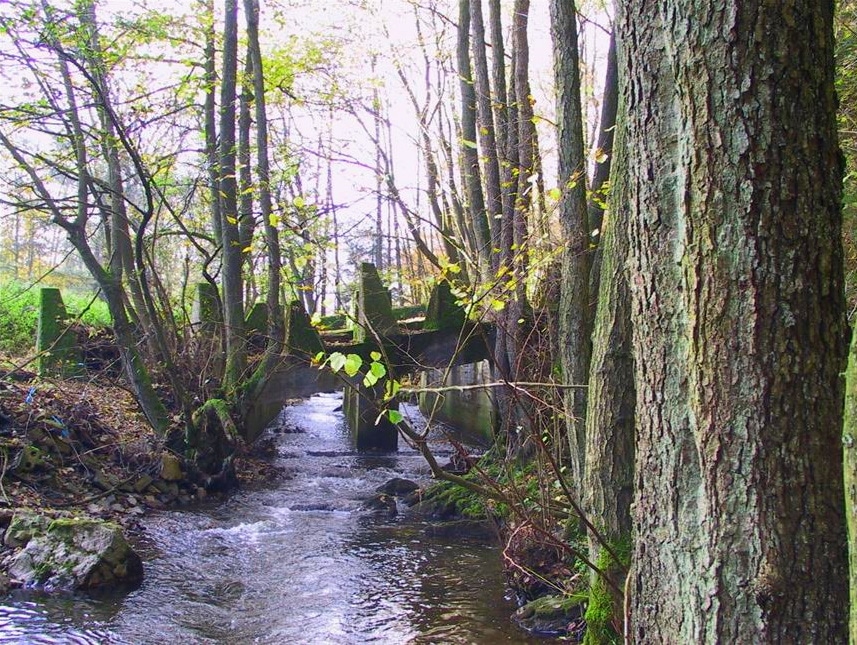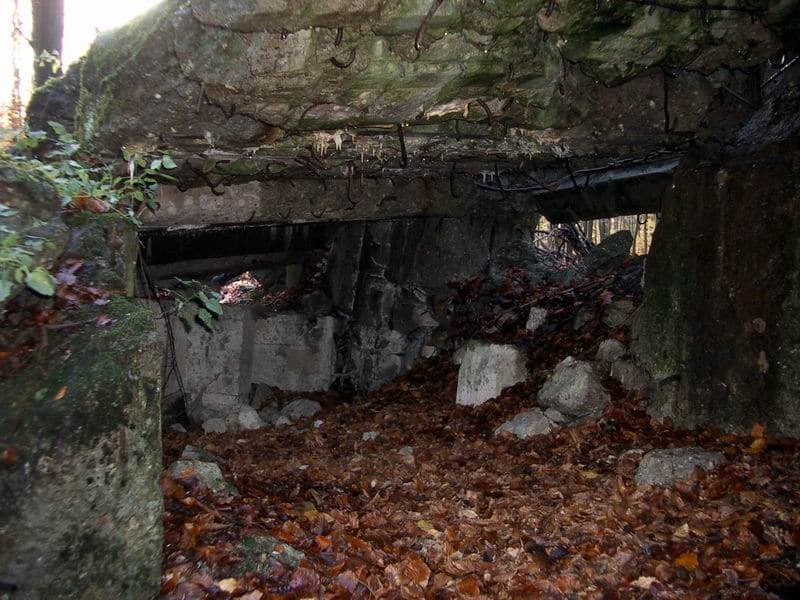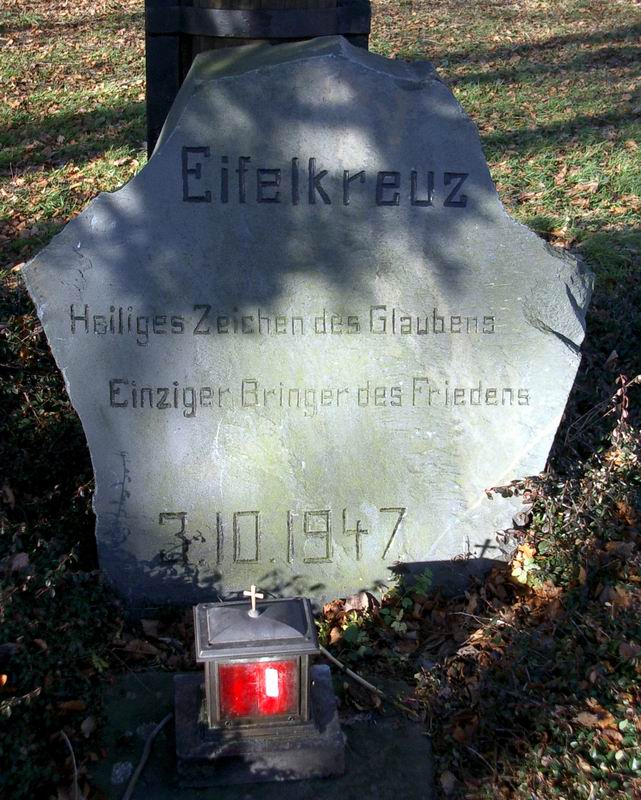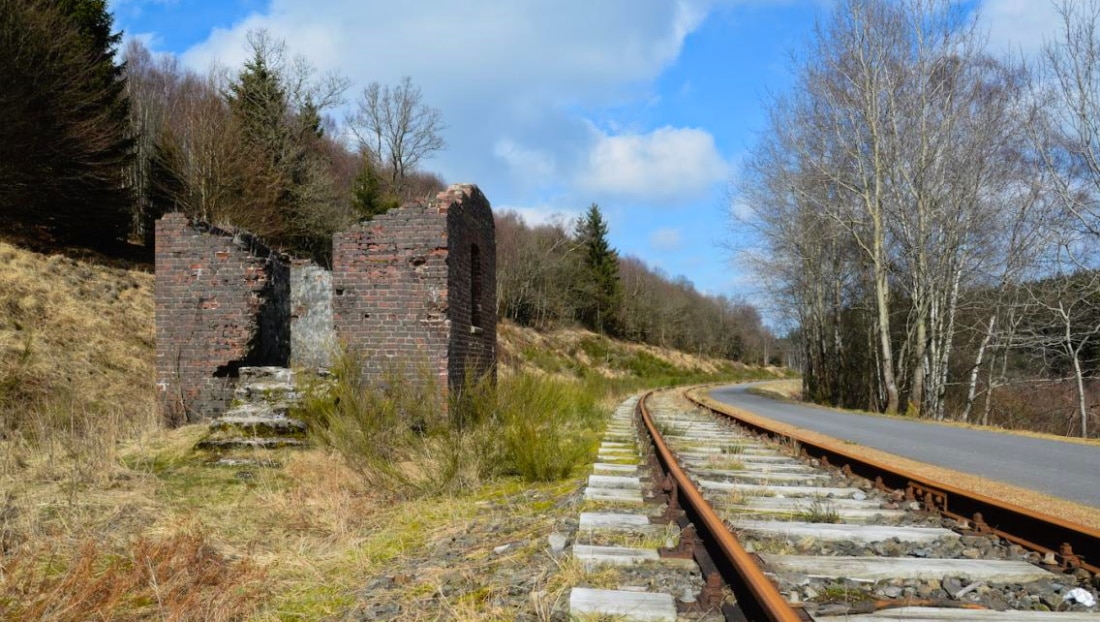 A Gp B to OB WEST at 2350 and at 2400 on Sep 22 1944
A Gp B to OB WEST at 2350 and at 2400 on Sep 22 1944
A Gp B KTB, Operations-Befehle. SIB-793 (Neitzel)
Col Hasso Neitzel was the Operations Officer of the 89.Infantry Division.
The southern half of the LXXIV Corps sector was assigned to the 347.Infantry-Division. The remaining organic combat strength of this division consisted of 100 men of the 860.Infantry-Regiment and 30 men of the 861.Infantry-Regiment. On September 10, this little band was reinforced by 40 men from a bicycle company. These elements were organized into a Kampfgruppe under the command of Col von Rochow, probably commander of 860.Infantry-Regiment. After reaching the West Wall, Kampfgruppe von Rochow was redesignated 3.Battalion, 860.Infantry-Regiment, and was gradually rehabilitated to serve as a nucleus for a full-strength regiment. Besides these infantry elements the 347.Infantry-Division still possessed 2 organic self-propelled 150-MM infantry cannons. When the 347.Infantry-Division took over its West Wall sector, the 536.Grenadier-Training-Regiment (526.Reserve-Division) with about 1200 infantry replacements, the 7.Luftwaffe-Fortress-Battalion, and the Battalion Stomach were attached to the division. (All officers and men of the Stomach Battalion suffered from ailments of the digestive tract and received a special diet. German testimonies regarding its value in combat differ so widely as to contradict one another)
It also received additional artillery with the 76.Artillery-Reserve-Battalion (6 105-MM howitzers and 3 150-MM howitzers). In AT weapons the 347.Infantry-Division possessed 17 75-MM AT guns. The 347.Infantry-Division may be dealt with very briefly here because it saw very little action during the last half of September 1944. On September 14, Kampfgruppe von Rochow was able to break out of an American encirclement near Elsenborn, throw American forces out of Rocherath, and assume command of its West Wall sector. Aside from recon and combat patrol activity centering around Losheimergraben, the sector remained quiet enough for the division to devote itself to the urgent task of rehabilitation and reorganization.
 The sector of 89.Infantry-Division was the scene of the US 9-ID’s effort to drive through the Lammersdorf Corridor and gain the Roer River in September 1944. On September 12, the elements of 89.Infantry-Division, split up into isolated groups, was committed from west of Muetzenich to southwest of Kalterherberg. Both flanks of the division were exposed but American pressure was so minor that Col Roesler saw no compelling reason to withdraw to the West Wall. On September 13, the division reported that American armored spearheads advancing along the Eupen – Monschau road toward Monschau had reached the edge of the woods north and south of Neu-Hattlich.
The sector of 89.Infantry-Division was the scene of the US 9-ID’s effort to drive through the Lammersdorf Corridor and gain the Roer River in September 1944. On September 12, the elements of 89.Infantry-Division, split up into isolated groups, was committed from west of Muetzenich to southwest of Kalterherberg. Both flanks of the division were exposed but American pressure was so minor that Col Roesler saw no compelling reason to withdraw to the West Wall. On September 13, the division reported that American armored spearheads advancing along the Eupen – Monschau road toward Monschau had reached the edge of the woods north and south of Neu-Hattlich.
The next day, other US forces pushed north from Bütgenbach in the sector of 347.Infantry-Division reached the southern periphery of Kalterherberg at 1100. Elements of 89.Infantry-Diivision established a screening line in Monschau and Hoefen. While fighting began in Kalterherberg, the 89.Infantry-Division repulsed an American attack on Lammersdorf. The US 9-ID’s push had begun. Konzen was recaptured, and along the Eupen – Muetzenich road American armored units attacked the Zollhaus (customs house) at Muetzenich. An American pincer movement aimed at the capture of Monschau emerged clearly, with one prong driving east on the Eupen – Monschau (Ternel – Hattlich) road while the other pushed up on the Bütgenbach – Kalterherberg road. Both drives made progress on September 14. On the evening of the 14 of September, American forces captured the customs house at Muetzenich and crossed the German Border. US infantry captured Kalterherberg and continued in a north-northeasterly direction toward Monschau while behind them American tanks and armored cars rumbled up the winding road from Kalterherberg to Monschau during the night from the 14 to the 15 of September.
On September 15, the 89.Infantry-Division decided to withdraw all its elements to the West Wall. The 416.Grenadier-Training-Regiment (later redesignated 1055.Infantry-Regiment) was committed in the northern half of the division sector – Lammersdorf – Monschau area while the remaining elements of the 1056.Infantry-Regiment was committed in the Hoefen – Alzen sector. The Russian battalion secured the division’s northern flank and the boundary with the 353.Infantry-Division. The Landesschuetzen were committed on the southern flank and boundary with the 347.Infantry-Division. The Luftwaffe Fortress Battalions were not considered battle-worthy and, hence, were employed to man the Schill Line, at this time still well to the rear of the division combat zone. The American pincers continued to close on Monschau. Late in the afternoon on September 15, American forces which had advanced up the road from Kalterberg entered Monschau.
 While a battle ensued in the town, American armor on the Eupen – Monschau road crossed the railroad tracks east of Muetzenich and headed for a juncture with US forces in Monschau. The town fell to the Americans during the night from September 15 to 16, and the US 9-ID achieved its first penetration of the West Wall when its forces thrust northeastward from Monschau toward Imgenbroich. Then the Germans rallied to the defense. They recaptured Konzen and Bicierath and reported that they had knocked out one American tank at Muetzenich.
While a battle ensued in the town, American armor on the Eupen – Monschau road crossed the railroad tracks east of Muetzenich and headed for a juncture with US forces in Monschau. The town fell to the Americans during the night from September 15 to 16, and the US 9-ID achieved its first penetration of the West Wall when its forces thrust northeastward from Monschau toward Imgenbroich. Then the Germans rallied to the defense. They recaptured Konzen and Bicierath and reported that they had knocked out one American tank at Muetzenich.
On September 16, the 353.Infantry-Division with its sector was attached to the LXXIV Corps. In the sector of the 89.Infantry-Division the day was uneventful except for an American attack west of Lammersdorf which the Germans repulsed. In the Monschau area, the Americans were apparently busy consolidating their gains and contented themselves with continuous and very heavy artillery fire on the German MLR (West Wall). During the night, US forces renewed their attack in the northern sector of the 89.Infantry-Division and this time succeeded in penetrating Lammersdorf. In the south American troops entered Hoefen. The see-saw fighting which now began lasted for several days. In the small hours of the morning on September 17, the Germans launched one counter-attacks to wipe out these penetrations. In both areas they achieved.
By the morning on September 17, their counter-attack had regained the first line of bunkers near Lammersdorf. At noon, however, the Americans renewed their drive north of Lammersdorf with strong infantry and armor and achieved fresh penetrations in the Scharnhorst Line. Another US attack, at Pastenbach south of Lammersdorf, was repulsed. At Hoefen fighting was very bitter. The village changed hands several times during the day. By evening, elements of the 89.Infantry-Division had captured the southern part of Hoefen. Their counter-attack continued on September 18 in the morning only one bunker north of Hoefen remained in American hands; by noon the Germans had regained the complete bunker line at Hoefen and had captured 14 Americans. But their success was short-lived. At 1600 on September 18, 15 to 20 American tanks broke through the MLR at Hoefen from the north and achieved a penetration east and south of Hoefen. The Germans were able to seal off this penetration by evening. In the north of the 89.ID sector, two American battalions supported by tanks launched an attack at about 1700 and broke through the West Wall at Lammersdorf, penetrating 3 miles in a south-southeasterly direction to the Kall River valley. There this penetration also was sealed off.
The Americans renewed their attack southeast of Lammersdorf at 0930 on September 19 but ran a foul of a German-fortified road block established during the night at the road junction half a mile southeast of Lammersdorf. Here this attack ground to a halt. Another American attack at Paustenbach was also repulsed. There, the 89.ID destroyed 2 US tanks and recaptured a bunker. The Germans noted that the Americans were building up their strength in Monschau. Additional forces including 14 tanks had moved into the town.
 A Gp B at 2045 on Sep 19 44
A Gp B at 2045 on Sep 19 44
A Gp B KTB, Letzte Meldung
(The Germans were very well informed about what was going on behind the American lines. Col Neitzel gives a rather amusing account of the constant traffic across the German MLR into and out of American-held territory. German soldiers in civilian clothing paid regular visits to Roetgen and Monschau. From the American prisoner collecting point at Roetgen, these visitors usually managed to bring back one or two German prisoners of war along with some American rations. From Monschau every move the Americans made was reported back to the G-2 section of 89.Infantry-Division.
 On September 20, the US 9-ID launched two armored attacks against Paustenbach. The Germans repulsed both and inflicted heavy losses on the attackers. Action in the LXXIV Corps sector shifted to the north where the Battle of the Stolberg Corridor fanned out southward to draw the 353.Infantry-Division and the 89.Infantry-Division into its orbit. At 1630 on September 20, American tanks jumping off from southwest of Zweifall penetrated the monument located about 3 miles east of that village. Both, the 89.Infantry-Division and the 353.Infantry-Division immediately launched a counter-attack against this salient. The Americans however, were not to be dislodged easily. On September 21, a US tank attack in the woods east of Zweifall threw the Germans back to the Weisser-Veh Creek 1 mile west of Huertgen. A few American tanks reached Germeter. To help restore the situation as soon as possible, the 7.Army ordered the 341.Assault-Gun-Brigade shifted from the LXXXI Corps to the 353.Infantry-Division. During the night from September 21 to 22, the division intended to move this assault gun brigade, one infantry and one engineer battalion, one artillery battery, and five 75-MM AT guns to the area with plans to counter-attack on September 22.
On September 20, the US 9-ID launched two armored attacks against Paustenbach. The Germans repulsed both and inflicted heavy losses on the attackers. Action in the LXXIV Corps sector shifted to the north where the Battle of the Stolberg Corridor fanned out southward to draw the 353.Infantry-Division and the 89.Infantry-Division into its orbit. At 1630 on September 20, American tanks jumping off from southwest of Zweifall penetrated the monument located about 3 miles east of that village. Both, the 89.Infantry-Division and the 353.Infantry-Division immediately launched a counter-attack against this salient. The Americans however, were not to be dislodged easily. On September 21, a US tank attack in the woods east of Zweifall threw the Germans back to the Weisser-Veh Creek 1 mile west of Huertgen. A few American tanks reached Germeter. To help restore the situation as soon as possible, the 7.Army ordered the 341.Assault-Gun-Brigade shifted from the LXXXI Corps to the 353.Infantry-Division. During the night from September 21 to 22, the division intended to move this assault gun brigade, one infantry and one engineer battalion, one artillery battery, and five 75-MM AT guns to the area with plans to counter-attack on September 22.
 LXXXI Corps to 353.Inf Div at 1720, Sep 21 44, LXXXI Corps KTB, Kampfverlauf. 7.Army to LXXXI Corps at 1940, Sep 21 44, LXXXI Corps KTB, Befehle: Heeresgruppe, Armee, use. A Gp B at 1840, Sep 21 44, A Gp B KTB, Letzte Meldung. A Gp B at 0110 on Sep 22 44, A Gp B KTB,Tagesmeldungen.
LXXXI Corps to 353.Inf Div at 1720, Sep 21 44, LXXXI Corps KTB, Kampfverlauf. 7.Army to LXXXI Corps at 1940, Sep 21 44, LXXXI Corps KTB, Befehle: Heeresgruppe, Armee, use. A Gp B at 1840, Sep 21 44, A Gp B KTB, Letzte Meldung. A Gp B at 0110 on Sep 22 44, A Gp B KTB,Tagesmeldungen.
The German counter-attack to wipe out the first American penetration of the Huertgen Forest apparently did not make any spectacular headway on September 22. On the second day of the attack (September 23) the forces of 353.Infantry-Division pushed the Americans back to within 3 miles southeast of Zweifall and recaptured one bunker. Three American tank attacks launched in the Rollesbroich – Huertgen Forest three miles northeast of Lammersdorf were beaten back. As for the Russian ‘Volunteers’ committed here, the first encounter with US tanks proved to be too much for them. After an appeal by several Russian deserters who rode American tanks into the Rollesbroich Forest and broadcast to their countrymen over a public address system, two-thirds of the Russian battalion went over to the Americans in a body. This incident decided the Germans that they were through experimenting with ‘Osttruppen’ (Eastern Troops). The remaining Russians were moved to the rear where they were disarmed and employed as laborers.
During the last week of September, American combat activity gradually died down in the LXXIV Corps sector. The first American drive for the Roer had been stopped. No one – friend or foe – as yet anticipated the tragic significance which the name Huertgen Forest would acquire in the bloody battles for the Roer River Dams of October and November 1944.
























